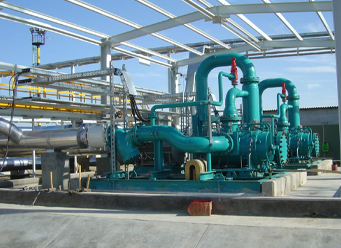Kannada
- Afrikaans
- Albanian
- Amharic
- Arabic
- Armenian
- Azerbaijani
- Basque
- Belarusian
- Bengali
- Bosnian
- Bulgarian
- Catalan
- Cebuano
- Corsican
- Croatian
- Czech
- Danish
- Dutch
- English
- Esperanto
- Estonian
- Finnish
- French
- Frisian
- Galician
- Georgian
- German
- Greek
- Gujarati
- Haitian Creole
- hausa
- hawaiian
- Hebrew
- Hindi
- Miao
- Hungarian
- Icelandic
- igbo
- Indonesian
- irish
- Italian
- Japanese
- Javanese
- Kannada
- kazakh
- Khmer
- Rwandese
- Korean
- Kurdish
- Kyrgyz
- Lao
- Latin
- Latvian
- Lithuanian
- Luxembourgish
- Macedonian
- Malgashi
- Malay
- Malayalam
- Maltese
- Maori
- Marathi
- Mongolian
- Myanmar
- Nepali
- Norwegian
- Norwegian
- Occitan
- Pashto
- Persian
- Polish
- Portuguese
- Punjabi
- Romanian
- Russian
- Samoan
- Scottish Gaelic
- Serbian
- Sesotho
- Shona
- Sindhi
- Sinhala
- Slovak
- Slovenian
- Somali
- Spanish
- Sundanese
- Swahili
- Swedish
- Tagalog
- Tajik
- Tamil
- Tatar
- Telugu
- Thai
- Turkish
- Turkmen
- Ukrainian
- Urdu
- Uighur
- Uzbek
- Vietnamese
- Welsh
- Bantu
- Yiddish
- Yoruba
- Zulu
Telephone: +86 13120555503
Email: frank@cypump.com
ಡಿಸೆ . 01, 2024 09:01 Back to list
chemical feed pumps water treatment
Chemical Feed Pumps in Water Treatment Essential Components for Effective System Performance
Water treatment processes are crucial for ensuring safe and clean water supply, especially in municipal, industrial, and agricultural applications. Among the many components involved, chemical feed pumps play a vital role. These pumps are responsible for delivering precise doses of chemicals that assist in the treatment of water, helping to eliminate contaminants and improve water quality. This article explores the importance, types, and operational considerations of chemical feed pumps in water treatment systems.
Importance of Chemical Feed Pumps
Chemical feed pumps are essential in water treatment facilities for a variety of reasons. Firstly, they facilitate the addition of chemicals used in disinfection, coagulation, flocculation, and pH adjustment. Common chemicals included are chlorine, alum, and lime, each serving specific purposes in the treatment process. For example, chlorine is critical for disinfection, while alum aids in the coagulation of particles, leading to clearer water.
Secondly, these pumps ensure that chemicals are delivered at precise flow rates, essential for achieving effective treatment outcomes. Overdosing or underdosing chemicals can lead to inadequate treatment, potentially resulting in contamination or regulatory non-compliance. Accurate dosing controlled by chemical feed pumps therefore not only guarantees safety but also enhances the efficiency of the overall water treatment process.
Types of Chemical Feed Pumps
Chemical feed pumps come in various types, each designed for specific applications and pumping conditions. The most common types include
1. Diaphragm Pumps These pumps utilize a flexible diaphragm to create suction and pressure, allowing for a smooth and consistent flow of chemicals. They are particularly suited for pumping viscous fluids and can handle corrosive chemicals, making them ideal for water treatment applications.
chemical feed pumps water treatment

2. Peristaltic Pumps These pumps transport fluids through a series of rollers that compress a flexible tube, effectively pushing the fluid forward. Peristaltic pumps are advantageous for their ability to handle slurries and their self-priming capability.
3. Metering Pumps Designed for delivering precise flow rates, metering pumps use mechanical or electronic controls to adjust the chemical dosage. This precision is critical in applications where chemical concentrations must be strictly maintained.
4. Progressing Cavity Pumps These pumps consist of a helical rotor that moves liquid through a stator. They are effective for high-viscosity fluids and can operate at varying flow rates, making them versatile in chemical feed applications.
Operational Considerations
When selecting and operating chemical feed pumps in water treatment, several factors should be considered. First, the chemical compatibility is paramount; hoses, seals, and pump materials must resist corrosion to prevent fluid leaks and system failures. Next, the pump’s flow rate should match the specific requirements of the treatment system, ensuring that dosages remain consistent over time.
Maintenance is another critical aspect that cannot be overlooked. Regular inspections and servicing help identify wear and tear before they lead to pump failures. Proper calibration of the dosing system ensures that the flow rates remain accurate, and any adjustments needed due to changing chemical characteristics or treatment demands should be readily facilitated.
Conclusion
In conclusion, chemical feed pumps are integral to the effective management of water treatment processes. Their ability to accurately deliver chemicals ensures that water treatment systems operate efficiently and meet safety standards. By understanding the types of pumps available and the operational considerations necessary for their effective use, water treatment facilities can enhance their treatment capabilities and contribute to better water quality for communities and industries alike. As the demand for clean water continues to grow, investing in reliable chemical feed pumps will remain a priority for sustainable water management practices.
-
Reliable Non-Clog Sewage Pumps with GPT-4-Turbo Tech
NewsAug.04,2025
-
High-Performance Air Pumps for Sand & Gravel | Efficient Transport
NewsAug.03,2025
-
ISG Series Vertical Pipeline Pump - Chi Yuan Pumps Co., LTD.|Energy Efficiency, Corrosion Resistance
NewsAug.03,2025
-
ISG Series Pipeline Pump - Chi Yuan Pumps | Energy Efficiency&Compact Design
NewsAug.03,2025
-
ISG Series Vertical Pipeline Pump - Chi Yuan Pumps Co., LTD.|High Efficiency, Low Noise, Durable
NewsAug.02,2025
-
ISG Series Vertical Pipeline Pump - Chi Yuan Pumps | High Efficiency, Low Noise
NewsAug.02,2025










